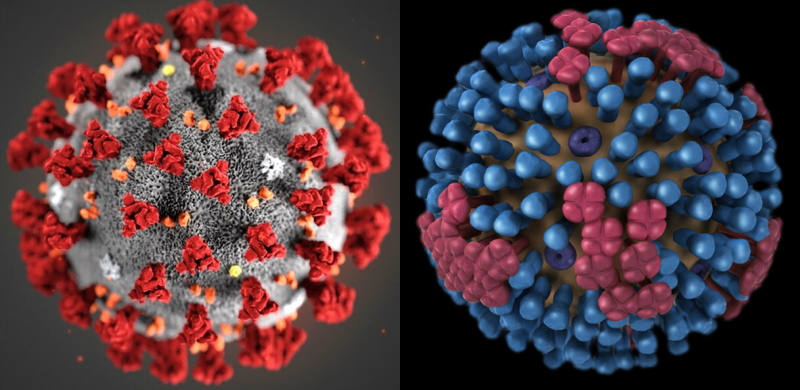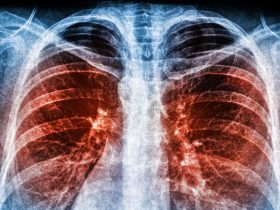It’s 2021 and we’re still talking all things COVID-19. Sure, vaccines are finally shining a light at the end of a long, painful, and all too often deadly tunnel – but experts say we’re not out of the woods yet. During the first quarter of 2021, there’s a chance for “a surge on top of a surge,” to quote Anthony S. Fauci, the United States government’s top infectious-disease doctor. And, Dr. Fauci said during a CNBC Healthy Returns Livestream, before vaccines can lead Americans to herd immunity and past this gloomy chapter, between 70 and 80% of the country’s population needs to be vaccinated.1
Achieving that lofty number could take a while. As the Times Square ball drop signaled 2021’s start, about 2 million Americans had been vaccinated, which translates to .6 percent of the US population. So, yes. It could be a while before we reach Dr. Fauci’s desired 80%.
Until then, we’ll continue to deal with COVID-19 and at the same time juggle the tail end of flu season, which makes this a good time to review COVID-19 and flu symptoms – with an emphasis on shared vs. distinct telltale signs.
Shared Symptoms
According to the Centers for Disease Control and Protection (CDC), both COVID-19 and flu symptoms range from barely there to severe and can include any combination of the following symptoms.2
- Fever or feeling feverish/chills
- Cough
- Shortness of breath or difficulty breathing
- Fatigue
- Sore throat
- Runny or stuffy nose
- Muscle pain or body aches
- Headache
- Vomiting and diarrhea, although this is more common in children than adults
Different Symptoms
Here’s where things get muddy – with the CDC seasoning its statements about different symptoms with a lot of “maybes”.3
- SARS-CoV-2 virus symptoms can be more severe for some than the influenza A and B viruses responsible for seasonal flu epidemics. COVID-19’s unpredictable severity is likely why the virus has caused more deaths in the United States within nine months than annual flu viruses typically cause in a year.
- A sudden loss of taste and smell are symptoms most commonly associated with COVID-19 than influenza.
- Shortness of breath or difficulty breathing at virus onset is more often associated with COVID-19.
- Evidence suggests that COVID-19 spreads more easily than the flu, which could explain COVID-19 super-spreaders and why it’s important to ask patients being tested for the virus if they recently attended a large gathering.
- It may take longer to experience COVID-19 symptoms, which implies that people with the virus are out in public and exposing others to the virus without even knowing it.
Testing for Insights
It can take a week post-exposure to test positive for COVID-19. Following this train of thought, the CDC suggests that the best time to get tested is around five days after suspected exposure to COVID-19. Even if a patient reports feeling symptoms associated with COVID-19, testing only one or two days after symptom onset could still produce a false negative for the virus.4
But what if a patient actually has the flu? An extended waiting period for a COVID-19 test could significantly reduce – or nullify – an antiviral medication’s power to manage influenza. The CDC recommends antiviral treatment within 48 hours of becoming sick with flu symptoms for maximum benefits.5
Waiting a week or so to first rule out COVID-19 before administering antiviral medication loses precious time for those at high risk of serious flu complications and puts these patients at a greater risk for hospitalization.
While there is no right or wrong set-in-stone timeline, patients should know that it’s okay to call their physician for advice. Only a qualified healthcare expert knows the full list of health and age factors that can increase a person’s risk of getting serious complications from the flu – and whether or not it would in a patient’s best to begin antiviral treatment sooner than later.
- CNBC Healthy Returns Livestream; CNBC Transcript: Dr. Anthony Fauci Speaks with CNBC’s Meg Tirrell Live During the CNBC Healthy Returns Livestream Today; WED, DEC 16 20202:56 PM EST; Retrieved at https://www.cnbc.com/2020/12/16/cnbc-transcript-dr-anthony-fauci-speaks-with-cnbcs-meg-tirrell-live-during-the-cnbc-healthy-returns-livestream-today.html
- Centers for Disease Control and Protection; Similarities and Differences between Flu and COVID-19. Retrieved at: https://www.cdc.gov/flu/symptoms/flu-vs-covid19.htm
- Centers for Disease Protection and Control; Symptoms of Coronavirus. Retrieved at https://www.cdc.gov/coronavirus/2019-ncov/symptoms-testing/symptoms.html
- Centers for Disease Control and Protection; CDC Guidance for Expanded Screening Testing to Reduce Silent Spread of SARS-CoV-2. Retrieved at https://www.cdc.gov/coronavirus/2019-ncov/php/open-america/expanded-screening-testing.html
- Centers for Disease Control and Protection; Overview of Influenza Testing Methods. Retrieved at: https://www.cdc.gov/flu/professionals/diagnosis/overview-testing-methods.htm






